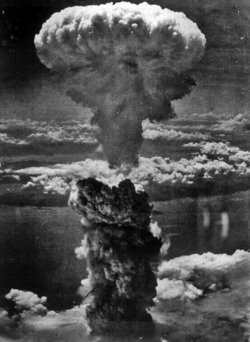There are 47 million people in this country without health insurance. Richmond resident Joey Palmer is one of them.
He learned how costly this can be after fracturing a rib in a relatively minor motorcycle accident and subsequently being hit with a bill for more than $12,000 from San Francisco General Hospital.
"There's no way I could pay something like that," Palmer, 32, told me. "I'm not a bum, but I'm not making a lot of money right now. How is anyone supposed to pay a bill like that?"
Iman Nazeeri-Simmons, director of administrative operations at San Francisco General, said she sympathizes with Palmer's situation.
"It's not us," she said. "It's the whole system, and the system is broken. We need to look closely at making changes and at how we can deliver care in a rational way."
Palmer's story illustrates the broader problem of runaway health care costs in the United States and a system that leaves millions of Americans to fend for themselves.
It also underlines the importance of universal coverage that guarantees affordable health care to anyone, anywhere -- a goal that's become a central issue in California and in the current presidential campaign.
"We are the only developed country that doesn't cover all its people," said Stan Dorn, a senior research associate at the nonpartisan Urban Institute. "We also spend a lot more than the rest of the developed world."
The United States spent an average of $6,102 per person on health care in 2004 (the latest year for which figures are available), according to the Organization for Economic Cooperation and Development.
Canada spent $3,165 per person, France $3,159, Australia $3,120 and Britain a mere $2,508. At the same time, life expectancy in the United States was lower than in each of these other countries and infant mortality was higher.
But those are just statistics. When you talk about America's health care crisis, you're really talking about people. And Palmer's experience speaks volumes.
He was riding his motorcycle through San Francisco's Presidio on Sept. 19. It was late afternoon. Palmer was heading toward the Golden Gate Bridge and then home to Richmond.
Suddenly his brakes locked, sending the motorcycle into a slide. Palmer slammed into a guardrail. He was pretty shaken up, but he could tell he wasn't badly hurt.
A passer-by saw the accident and called for help. An ambulance arrived within minutes.
Palmer said he told the paramedics that his ribs felt banged up, possibly broken, but that he was basically OK. He said he preferred to be treated in Contra Costa County, where he lives and would probably qualify for reduced hospital rates because of his income level.
Palmer is a woodworker who specializes in the decorative touches on wealthy people's yachts. He said he made only about $7,500 last year, getting by primarily with the assistance of relatives.
Palmer said the paramedics were concerned that he may have sustained internal injuries and insisted that he be treated immediately at a hospital. So he was driven by ambulance to San Francisco General, the only trauma center in the city.
Palmer got lucky here. The ambulance was from the Presidio Fire Department, which is run by the federal government and doesn't charge for ambulance service. Had the trip been made by a private ambulance company, it likely would have cost Palmer between $700 and $1,000.
On the other hand, what Palmer didn't know is that as soon as the paramedics radioed ahead to say they were bringing in an accident victim, San Francisco General, as per the hospital's procedures, issued a trauma alert to its staff.
Basically, that means a page was sent to doctors and anesthesiologists on call at the time. That page alone cost Palmer $4,659, and he hadn't even set foot yet inside the hospital.
The actual hospital experience was, to put it mildly, a nightmare. After blood was drawn for a variety of tests (the cheapest of which cost $44 and the priciest $107), some X-rays were taken ($423).
Then, Palmer said, he was left in a room ($2,070) with a junkie "who was having a real bad trip." He asked to be moved elsewhere but was told no other rooms were available. So Palmer ended up on a gurney in the hallway.
And he waited there for five hours.
Palmer's bill indicates that he was twice given Vicodin ($22) to ease his pain during this interval, but he insists he took no medication.
"I finally saw someone and asked if I could check myself out," he said. "The guy said they were still waiting for the results of my CT scans. I said that I hadn't had any CT scans. It turns out they forgot to put me on the list."
So Palmer was put on the list for CT scans. And he waited another hour.
At last the CT scans were taken ($3,334) and then another round of X-rays because, Palmer said, the first batch apparently hadn't been done correctly.
"Finally a doctor came to me -- it's now almost 2 in the morning -- and said, yes, I had a fractured rib and some bruised muscles," Palmer recalled. "That was that. End of conversation."
Shortly afterward, he said, a clerical staffer approached with discharge papers for Palmer to sign.
"She asked how I intended to pay for everything," Palmer said. "I told her I didn't have any insurance. She looked at me and then asked if there was anyone I could sue."
Several weeks later, he received a bill for $11,082 in hospital charges and a separate bill for $922 in doctors' fees.
Palmer's hospital visit was expensive and time consuming, but it wasn't unique. Many people could cite similar (and similarly costly) experiences in receiving "emergency" medical care at U.S. facilities.
"We view health care as a chance to make as much money as you can," said Dorn at the Urban Institute. "The goal of health care should be improving people's health."
San Francisco General's Nazeeri-Simmons was unable to comment on Palmer's lengthy hospital stay because she didn't have access to his medical records. But with Palmer's permission, she was able to examine his billing file.
"These charges are comparable to the entire health care market," Nazeeri-Simmons said. "They aren't out of line with what other hospitals are charging. They're actually lower."
Not always. Trauma activation charges, for example, typically range from about $2,000 at some Bay Area hospitals to $7,000. At Marin General Hospital, the charge can run as high as $12,636.
Nazeeri-Simmons said a sliding scale is offered for low-income San Francisco residents. But Palmer, as a resident of Contra Costa County, wasn't eligible for the program.
"If you were uninsured and making less than $10,000, you would pay nothing," Nazeeri-Simmons said. "But that's only if you live in the City and County of San Francisco."
After receiving his bill, Palmer complained to the hospital about how much he was being charged. Nazeeri-Simmons acknowledged that a second look was given to the bill at Palmer's request "and we decided to eliminate the trauma activation charge."
That reduced the amount due by $4,659. But Palmer still owes more than $7,000 for an eight-hour hospital visit that involved, by his estimate, only about 15 minutes of actual care.
"It's unfortunate that he's in the situation he's in," Nazeeri-Simmons said. "But what is an individual hospital to do? Are we supposed to eat the costs?"
She said a government-run program similar to systems in place in all other developed democracies would almost certainly keep costs in check while ensuring that everyone has access to treatment (without being impoverished in the process).
"Universal coverage would mean that a Joey Palmer doesn't get left out in the cold just because he was in the wrong county," Nazeeri-Simmons said.
For his part, Palmer said he'll try to pay off his hospital bill as best he can. And then, if he can swing it, he'll leave the country. He's thinking seriously about moving to France.
"If you get sick over there," Palmer mused, "you can go to any hospital and it won't cost a fortune."
He said that with a tone of quiet disbelief.
David Lazarus' column appears Wednesdays, Fridays and Sundays. He also can be heard Saturdays, 4 to 7 p.m., on KGO Radio. Send tips or feedback to dlazarus@sfchronicle.com.
.








